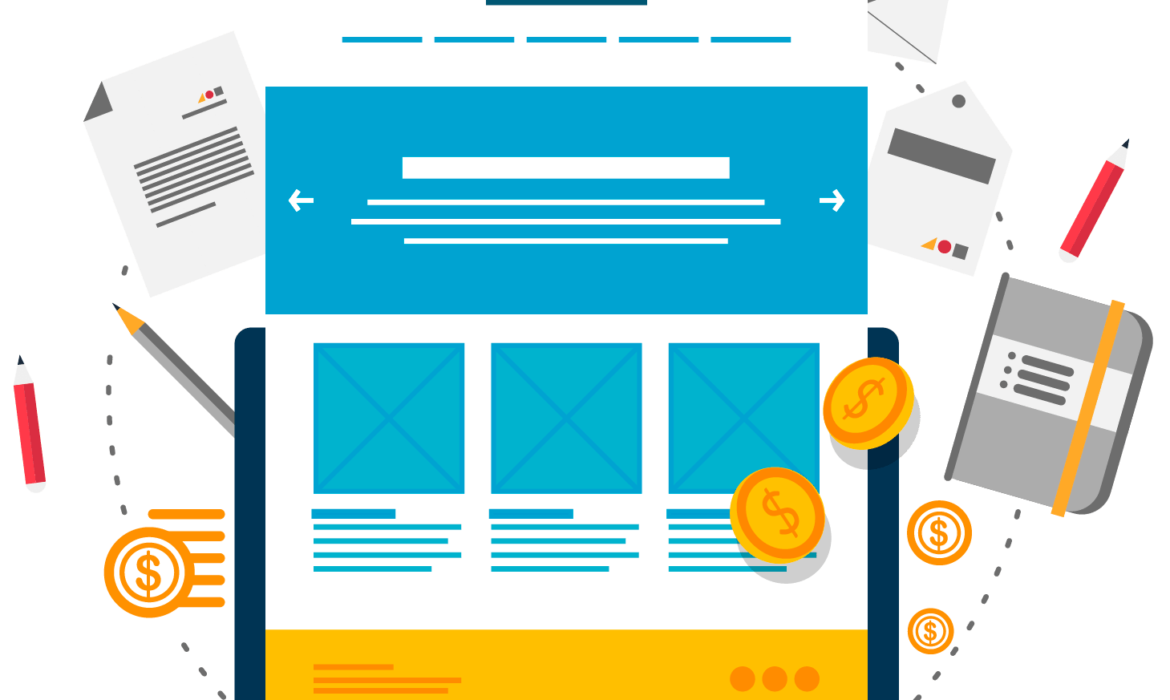WordPress Design for Membership Websites: A Guide
Introduction
Creating a successful membership website requires careful planning and execution. WordPress, combined with the right plugins and design principles, can help you build a secure and engaging platform for your members. This guide provides essential tips for designing a membership website that delivers value and fosters community.
Choosing the Right WordPress Membership Plugin
Selecting the appropriate membership plugin is crucial for your website’s functionality. Consider the following factors:
- Features: Evaluate the plugin’s features, such as membership levels, content dripping, payment integrations, and access control.
- Ease of use: Choose a plugin with a user-friendly interface for both you and your members.
- Security: Prioritize plugins with robust security measures to protect member data.
- Scalability: Ensure the plugin can accommodate your growing membership base.
Designing a User-Friendly Member Experience
- Clear member dashboard: Create a central hub for members to access their account information and content.
- Intuitive navigation: Make it easy for members to find what they need.
- Personalized content: Tailor content delivery based on membership levels.
- Strong community features: Encourage member interaction through forums or groups.
- Secure member login: Implement robust security measures to protect member accounts.
Building Trust and Security
- Secure payment gateways: Integrate trusted payment processors to protect financial information.
- Data privacy: Adhere to data protection regulations (e.g., GDPR, CCPA).
- Regular security updates: Keep WordPress, plugins, and themes up-to-date.
- Strong passwords: Encourage members to use strong, unique passwords.
- Two-factor authentication: Implement an extra layer of security for added protection.
Designing Engaging Member Content
- High-quality content: Deliver valuable content that meets members’ expectations.
- Exclusive content: Offer exclusive content to incentivize membership.
- Content drip: Release content gradually to maintain member engagement.
- Interactive elements: Incorporate quizzes, polls, or webinars to foster community.
- Member testimonials: Showcase positive experiences to build trust.
Conclusion
Building a successful membership website requires a combination of design expertise, technical knowledge, and a focus on member experience. By following these guidelines and utilizing the right tools, you can create a thriving membership community.
Need a professional website setup? Contact us now.
WordPress Design for Online Portfolios: Tips for Showcasing Your Work
Introduction
An online portfolio is your digital showcase to the world. It’s essential to create a website that not only highlights your work but also reflects your personal brand. WordPress offers a flexible platform to build a captivating portfolio. This guide will provide you with valuable insights and tips to design a standout online portfolio.
Choosing the Right WordPress Theme
- Prioritize visual appeal: Select a theme that aligns with your creative style.
- Focus on image-centric layouts: Ensure the theme effectively showcases your work.
- Consider customization options: Look for themes that allow you to personalize the design.
- Optimize for speed: Choose a theme that loads quickly for a seamless user experience.
- Check for portfolio-specific features: Some themes offer built-in portfolio layouts and features.
Creating a Strong Visual Identity
- Develop a consistent style: Maintain a cohesive look and feel throughout your portfolio.
- Use high-quality images: Invest in professional photography or editing to showcase your work.
- Create a captivating homepage: Grab visitors’ attention with a strong visual introduction.
- Experiment with layout: Try different layouts to find the best way to display your work.
- Pay attention to typography: Choose fonts that complement your design and enhance readability.
Showcasing Your Work Effectively
- Curate your portfolio: Select your best work to create a strong impression.
- Tell a story with your projects: Provide context and explain your creative process.
- Use clear and concise project descriptions: Highlight key details and achievements.
- Optimize images for web: Ensure images load quickly without compromising quality.
- Create different project categories: Organize your work into relevant sections.
Enhancing User Experience
- Prioritize navigation: Make it easy for visitors to explore your portfolio.
- Optimize loading times: Improve website speed for a better user experience.
- Include a strong call to action: Encourage visitors to contact you or view more work.
- Mobile optimization: Ensure your portfolio looks great on all devices.
- Gather feedback: Use analytics to understand visitor behavior and make improvements.
Conclusion
Creating a compelling online portfolio is essential for showcasing your creative talent. By following these tips and experimenting with different design elements, you can create a website that effectively represents your work and attracts potential clients or employers.
Need a professional website setup? Contact us now.
Creating a WordPress Blog with a Stunning Design
Introduction
A well-designed blog is essential for attracting and retaining readers. Your blog’s appearance can significantly impact user experience and engagement. This guide will help you create a visually stunning WordPress blog that leaves a lasting impression.
Understanding Your Blog’s Aesthetic
- Define your blog’s niche: Determine your target audience and the overall tone of your content.
- Choose a color palette: Select colors that reflect your brand and evoke the desired emotions.
- Select fonts: Opt for legible and visually appealing fonts that complement your content.
Choosing the Right WordPress Theme
- Prioritize responsiveness: Ensure your theme adapts seamlessly to different screen sizes.
- Look for customization options: Choose a theme that allows you to personalize the design.
- Consider loading speed: Select a theme optimized for performance.
- Check for compatibility: Ensure the theme integrates well with essential plugins.
Creating a Visually Appealing Layout
- Establish a clear hierarchy: Use font sizes, spacing, and visual cues to guide readers.
- Incorporate white space: Allow breathing room for better readability and visual appeal.
- Use high-quality images: Invest in professional images or use stock photos wisely.
- Implement a consistent design: Maintain a cohesive look throughout your blog.
Enhancing User Experience
- Prioritize readability: Choose font sizes and styles that are easy on the eyes.
- Optimize image loading times: Compress images without compromising quality.
- Improve navigation: Create a clear and intuitive menu structure.
- Mobile optimization: Ensure your blog looks and functions perfectly on mobile devices.
Additional Tips
- Experiment with different layouts: Try various layouts to find what works best for your content.
- Use a page builder: Tools like Elementor or Beaver Builder can help you create custom designs.
- Leverage typography: Use fonts effectively to create visual interest and hierarchy.
- Consistency is key: Maintain a consistent design across all blog posts and pages.
Conclusion
Creating a stunning WordPress blog requires a combination of design expertise, technical knowledge, and a deep understanding of your audience. By following these guidelines and experimenting with different elements, you can craft a blog that captivates readers and leaves a lasting impression.
Need a professional website setup? Contact us now.
WordPress Design for Business Websites: Tips and Tricks
Introduction
A well-designed business website is crucial for establishing a strong online presence and driving conversions. This guide provides essential tips and strategies for creating professional WordPress websites that effectively communicate your brand message and engage visitors.
Key Elements of a Successful Business Website
- Clear and Consistent Branding: Develop a strong brand identity and ensure it’s reflected throughout your website.
- Professional Design: Choose a clean, modern design that aligns with your industry and target audience.
- Clear Call to Action (CTA): Guide visitors towards desired actions with prominent and compelling CTAs.
- Strong Visual Hierarchy: Prioritize important content elements for easy navigation.
- High-Quality Imagery: Use professional images that enhance your brand’s story.
- Mobile Optimization: Ensure your website is responsive and looks great on all devices.
- Fast Loading Speeds: Optimize images and code for fast performance.
- Trust and Authority: Build credibility through testimonials, certifications, and security badges.
Conversion Optimization Best Practices
- Understand Your Audience: Create content and design elements that resonate with your target audience.
- A/B Testing: Experiment with different design elements to improve conversion rates.
- Clear Value Proposition: Clearly communicate the benefits of your products or services.
- Strong Headlines: Craft compelling headlines that grab attention and entice clicks.
- Effective Forms: Keep contact forms short and simple to increase completion rates.
- Trust Signals: Display customer reviews, testimonials, and security badges.
Additional Tips
- Choose the Right WordPress Theme: Select a theme that aligns with your business and is easy to customize.
- Utilize Essential Plugins: Enhance functionality with plugins for SEO, performance, security, and contact forms.
- Prioritize User Experience: Create a seamless and intuitive user journey.
- Regular Updates: Keep your website and plugins updated for security and performance.
Conclusion
Designing a successful business website requires a combination of creativity, strategy, and technical expertise. By following these guidelines and continuously optimizing your website, you can create a powerful online presence that drives conversions and achieves your business goals.
Need a professional website setup? Contact us now.
Designing an E-commerce WordPress Website: A Comprehensive Guide
Introduction
WordPress, coupled with the powerful WooCommerce plugin, has become a popular choice for building online stores. To create a successful e-commerce website, you need to combine strong design principles with effective e-commerce strategies. This guide provides essential steps to help you design an engaging and user-friendly online store.
Choosing the Right WordPress Theme
Selecting a suitable theme is crucial for your e-commerce website’s appearance and functionality. Consider the following:
- Responsiveness: Ensure the theme is mobile-friendly for optimal user experience.
- Product Showcase: The theme should effectively highlight your products with high-quality images.
- Customization Options: Flexibility to tailor the theme to your brand identity is essential.
- Performance: Choose a theme that loads quickly for improved user experience.
- WooCommerce Compatibility: Ensure the theme seamlessly integrates with WooCommerce.
Optimizing Product Pages
Product pages are the heart of your online store. Focus on the following:
- Clear and Compelling Product Descriptions: Use high-quality product images and detailed descriptions.
- Customer Reviews: Encourage customer reviews to build trust and credibility.
- Call to Action: Create clear and persuasive calls to action (CTAs).
- Product Variations: Offer different options like size, color, or quantity.
- Pricing and Availability: Clearly display pricing and inventory status.
Enhancing User Experience
A positive user experience is crucial for conversions. Consider these elements:
- Intuitive Navigation: Make it easy for customers to find products.
- Fast Loading Times: Optimize images and minimize code for faster load times.
- Secure Checkout: Implement robust security measures to protect customer data.
- Clear Returns Policy: Build trust by clearly outlining your return policy.
- Excellent Customer Support: Provide timely and helpful customer support.
Marketing and Promotion
Effective marketing is essential for driving traffic and sales. Utilize the following strategies:
- Search Engine Optimization (SEO): Optimize product descriptions and website content for search engines.
- Social Media Marketing: Leverage social media platforms to reach your target audience.
- Email Marketing: Build an email list and send targeted campaigns.
- Promotions and Discounts: Offer incentives to encourage purchases.
- Analytics: Track website performance and customer behavior to make data-driven decisions.
Conclusion
Designing a successful e-commerce website requires a combination of design expertise, technical knowledge, and a deep understanding of customer behavior. By following these guidelines and continuously optimizing your online store, you can create a thriving e-commerce business.
Need a professional website setup? Contact us now.
WordPress Design Trends for 2024: A Roundup
Introduction
The digital landscape is constantly evolving, and staying updated with the latest design trends is crucial for keeping your WordPress website fresh, engaging, and relevant. This guide explores the top WordPress design trends shaping the web in 2024.
Key WordPress Design Trends for 2024
- Minimalism: Clean layouts, ample white space, and a focus on essential content continue to dominate.
- Dark Mode: Offering a dark theme option provides a visually appealing and user-friendly experience.
- Bold Typography: Experiment with large, striking fonts to create impactful headlines and visual hierarchy.
- Interactive Elements: Enhance user engagement with interactive components like animations, micro-interactions, and parallax scrolling.
- Video Backgrounds: Captivate visitors with immersive video backgrounds that set the mood.
- Asymmetrical Layouts: Break free from traditional grids and create visually dynamic designs.
- 3D Elements: Add depth and dimension to your website with subtle 3D effects and illustrations.
- Glassmorphism: Incorporate frosted glass effects for a modern and elegant look.
- Neumorphism: Create a soft, almost 3D appearance using subtle shadows and highlights.
- Voice Search Optimization: Design with voice search in mind to improve accessibility and user experience.
Incorporating Trends into Your WordPress Website
- Research: Explore websites and design portfolios to identify trends that align with your brand.
- Experimentation: Don’t be afraid to try new design elements and approaches.
- Balance: Avoid overwhelming your website with too many trends.
- User-Centricity: Ensure that design choices enhance user experience and readability.
- Accessibility: Prioritize accessibility to make your website inclusive for all users.
Conclusion
By staying informed about the latest WordPress design trends, you can create websites that are visually appealing, მომხმარებლისთვის მოსახერხებელი, and stand out from the competition. Remember to adapt trends to fit your brand’s identity and avoid following trends blindly.
Need a professional website setup? Contact us now.
Essential WordPress Plugins for Designers: A Curated List
Introduction
As a designer, you need the right tools to bring your creative vision to life on WordPress. While themes provide the foundation, plugins offer the flexibility and functionality to create exceptional websites. This guide highlights essential WordPress plugins that can significantly enhance your design process.
Page Builders
- Elementor: Known for its drag-and-drop interface and extensive customization options, Elementor empowers designers to create complex layouts without coding.
- Beaver Builder: Offers a user-friendly experience with a focus on speed and performance.
- Brizy: Provides a clean and intuitive interface with a variety of pre-built templates and elements.
Design and Functionality Enhancement
- Advanced Custom Fields: Extend WordPress’s capabilities by creating custom fields for flexible content management.
- WooCommerce: If you’re designing e-commerce websites, WooCommerce is essential for product management, checkout, and payment processing.
- Contact Form 7: Create custom contact forms with ease, allowing you to collect valuable information from visitors.
- Slider Revolution: Build stunning visual sliders to showcase your work or highlight key content.
- Yoast SEO: Optimize your website for search engines while improving overall content structure.
Image and Media Optimization
- Smush: Compress images without compromising quality to improve website loading speed.
- Regenerate Thumbnails: Optimize image sizes for different screen resolutions.
- Envira Gallery: Create beautiful image galleries with various layout options and customization.
Performance and Security
- WP Rocket: Enhance website speed and performance through caching and optimization techniques.
- Sucuri: Protect your website from security threats with advanced monitoring and protection features.
- Wordfence Security: Bolster website security with firewall, malware scanning, and intrusion prevention.
Additional Considerations
- Plugin Compatibility: Ensure compatibility between plugins to avoid conflicts and performance issues.
- Performance Impact: Evaluate how plugins affect your website’s loading speed.
- Regular Updates: Keep plugins up-to-date for security and feature enhancements.
- User Experience: Prioritize plugins that improve the user experience.
Conclusion
By incorporating these essential WordPress plugins into your design workflow, you can create more efficient, visually appealing, and functional websites. Remember to carefully select plugins based on your specific project requirements and test them thoroughly to ensure optimal performance.
Need a professional website setup? Contact us now.
Creating a Custom WordPress Theme: A Step-by-Step Tutorial
Introduction
Creating a custom WordPress theme offers unparalleled control over your website’s design and functionality. While it requires a solid understanding of HTML, CSS, and PHP, the rewards of a truly unique theme are significant. This tutorial provides a comprehensive roadmap to guide you through the process.
Understanding WordPress Theme Structure
Before diving into code, grasp the fundamental structure of a WordPress theme:
- style.css: Contains theme information and basic styles.
- functions.php: Houses PHP code for theme customization and functionality.
- index.php: The main template file.
- header.php: Includes the header section.
- footer.php: Includes the footer section.
- sidebar.php: Contains the sidebar content.
- template-parts: Directory for reusable template parts.
Setting Up Your Development Environment
To begin, establish a local development environment using tools like:
- Local by Flywheel: User-friendly local WordPress development platform.
- MAMP or XAMPP: Open-source solutions for macOS and Windows.
- Vagrant and VirtualBox: For more advanced users.
Building the Theme Foundation
- Create a new theme folder: Name it uniquely and include a
style.cssfile. - Define theme information: Add essential details to
style.css. - Create basic template files: Structure your theme with
index.php,header.php,footer.php, andsidebar.php.
Incorporating HTML and CSS
- Design your layout: Use HTML to structure your content and CSS for styling.
- Create a responsive design: Ensure your theme looks great on different devices.
- Utilize WordPress’s built-in styles: Leverage core styles for consistency.
Integrating PHP for Functionality
- Understand the WordPress Loop: Learn how to display posts and pages using PHP.
- Create custom functions: Write PHP code for specific functionalities.
- Utilize WordPress actions and filters: Extend theme capabilities.
- Implement theme options: Allow users to customize the theme.
Advanced Theme Development
Explore advanced topics to enhance your theme:
- Custom post types and taxonomies: Create custom content structures.
- Widget areas: Add customizable sections to your theme.
- Theme options panel: Build a user-friendly interface for customization.
- Performance optimization: Improve loading speed and user experience.
Testing and Deployment
Thoroughly test your theme on different browsers and devices. Once satisfied, deploy it to your live website.
Conclusion
Creating a custom WordPress theme is a rewarding journey. By following these steps and continuously learning, you can build exceptional websites tailored to your clients’ needs. Remember, practice makes perfect, so experiment and iterate on your designs.
Need a professional website setup? Contact us now.
Choosing the Right WordPress Theme: A Detailed Guide
Introduction
Selecting the right WordPress theme is crucial for the success of your website. It sets the foundation for your online presence, influencing how visitors perceive your brand and engage with your content. With thousands of themes available, making the right choice can be daunting. This guide will help you navigate the process and select a theme that perfectly suits your needs.
Understanding Your Website’s Needs
Before diving into theme options, it’s essential to define your website’s purpose and goals. Consider the following:
- Website’s purpose: What is the primary goal of your website? Is it to sell products, share information, or build a community?
- Target audience: Who are you trying to reach with your website? Understanding your target audience will help you choose a theme that resonates with them.
- Content type: What kind of content will you be featuring? Will you be using images, videos, blog posts, or a combination?
- Desired features: What specific features do you need on your website? Consider e-commerce, contact forms, membership areas, or other functionalities.
Key Factors to Consider When Choosing a WordPress Theme
Once you have a clear understanding of your website’s needs, you can start evaluating themes based on the following criteria:
- Design and aesthetics: The theme’s visual style should align with your brand identity and target audience.
- Responsiveness: Ensure the theme is mobile-friendly and adapts seamlessly to different screen sizes.
- Customization options: Flexibility to personalize the theme without extensive coding is essential.
- SEO friendliness: A theme optimized for search engines can improve your website’s visibility.
- Speed and performance: A fast-loading website is crucial for user experience and SEO.
- Compatibility: Check if the theme is compatible with essential plugins and your hosting environment.
- Support and updates: Reliable support and regular updates are important for theme maintenance.
- User experience: Consider how the theme enhances user navigation and engagement.
Where to Find WordPress Themes
There are numerous sources for WordPress themes:
- WordPress.org Theme Directory: Offers a vast collection of free themes.
- Theme marketplaces: Platforms like ThemeForest and Elegant Themes provide premium themes with advanced features.
- Theme developers: Many reputable theme developers offer their own collections.
Tips for Choosing the Perfect Theme
- Demo the theme: Most themes offer live previews or demos, allowing you to see how it looks with sample content.
- Read reviews: Check user reviews to get insights into the theme’s performance and support.
- Consider long-term goals: Choose a theme that can grow with your website.
- Test different themes: Experiment with multiple themes to find the best fit.
- Prioritize simplicity: A clean and clutter-free design often provides a better user experience.
Conclusion
Selecting the right WordPress theme is a crucial step in creating a successful website. By carefully considering your website’s goals, target audience, and the factors outlined in this guide, you can make an informed decision. Remember, the perfect theme is one that complements your content and enhances the overall user experience.
If you’re still unsure about which theme to choose or need assistance with customization, consider consulting a WordPress expert for personalized guidance.
Need a professional website setup? Contact us now.
WordPress Design Basics: A Comprehensive Guide for Beginners
Content
Welcome to the fascinating world of WordPress design! WordPress is a powerful platform that allows you to create stunning and functional websites, even if you have no coding experience. This comprehensive guide will take you through the fundamentals of WordPress design, including themes, plugins, and customization options.
By the end of this guide, you will be able to:
- Choose the perfect WordPress theme for your website
- Install and activate WordPress plugins to add new features and functionality
- Customize your WordPress website to match your brand and style
Choosing a WordPress Theme
Your WordPress theme controls the overall look and feel of your website. There are thousands of free and premium themes available to choose from, so you’re sure to find one that perfectly matches your vision. When choosing a theme, consider the following factors:
- Design: Does the theme match the style you’re going for?
- Features: Does the theme include the features you need?
- Responsiveness: Is the theme responsive, meaning it looks good on all devices?
- Support: Does the theme developer offer support if you need help?
Installing and Activating WordPress Plugins
WordPress plugins are like little apps that you can add to your website to extend its functionality. There are plugins for just about everything you can imagine, from adding contact forms to creating galleries to setting up an online store.
To install a plugin, follow these steps:
- Log in to your WordPress dashboard.
- Navigate to the “Plugins” menu.
- Click on “Add New”.
- Search for the plugin you want to install.
- Once you have found the plugin you want, click on “Install Now” and then “Activate”.
Customizing Your WordPress Website
WordPress offers a variety of ways to customize your website to match your brand and style. You can customize things like your website’s menus, colors, fonts, and layout.
To customize your WordPress website, follow these steps:
- Log in to your WordPress dashboard.
- Navigate to the “Appearance” menu.
- You will see a number of options for customizing your website, such as “Themes”, “Menus”, “Widgets”, and “Customize”.
Conclusion
Congratulations! You’ve now learned the fundamentals of WordPress design. With a little practice, you’ll be able to create a beautiful and functional website that meets your needs.
If you’re new to WordPress and feeling overwhelmed, or if you want to create a website that truly stands out, don’t hesitate to contact us! We are a team of experienced WordPress designers and developers who can help you create a website that you’ll love. Contact us today for a free consultation.
I hope this blog post has been helpful! If you have any questions, please feel free to leave a comment below.
Additional Tips
- When choosing a WordPress theme, it’s important to preview it on a mobile device to make sure it looks good.
- There are many resources available online to help you learn more about WordPress design.
- Don’t be afraid to experiment with different themes and plugins to find what works best for you.
Note:
This is just a basic overview of WordPress design. There are many other things you can learn to do, such as creating custom post types, adding custom fields, and working with child themes. But this guide should give you a good starting point for creating a great WordPress website.
Remember: WordPress design is a journey of continuous learning and improvement. As you gain experience and explore new techniques, you’ll be able to create even more stunning and functional websites.
Call to Action
If you’re ready to take your WordPress design skills to the next level, contact us today! We offer a variety of WordPress design services, მათ შორის:
- Custom WordPress theme development
- WordPress plugin development
- WordPress website customization
- WordPress website maintenance
We can help you create a website that meets your needs and exceeds your expectations














